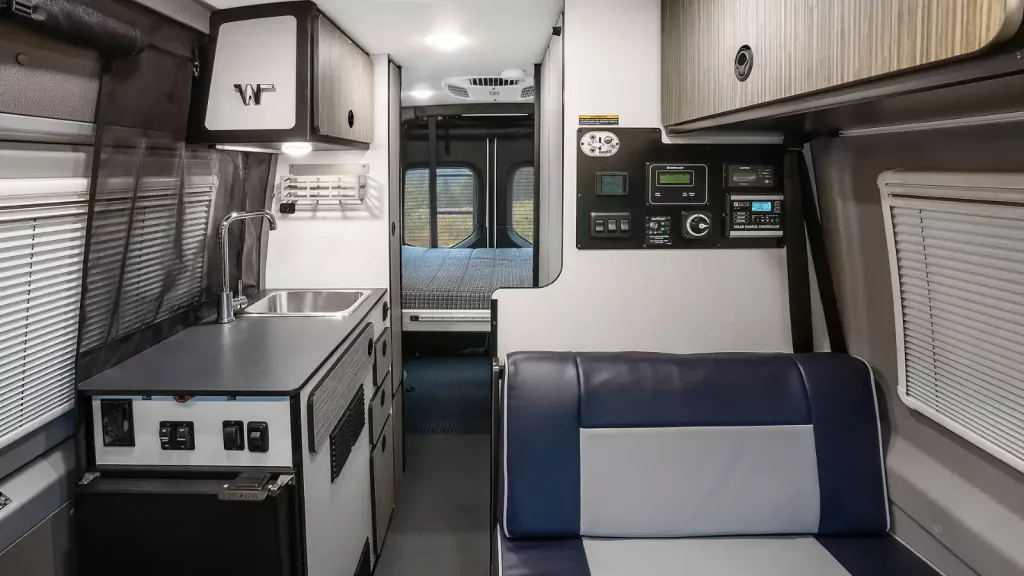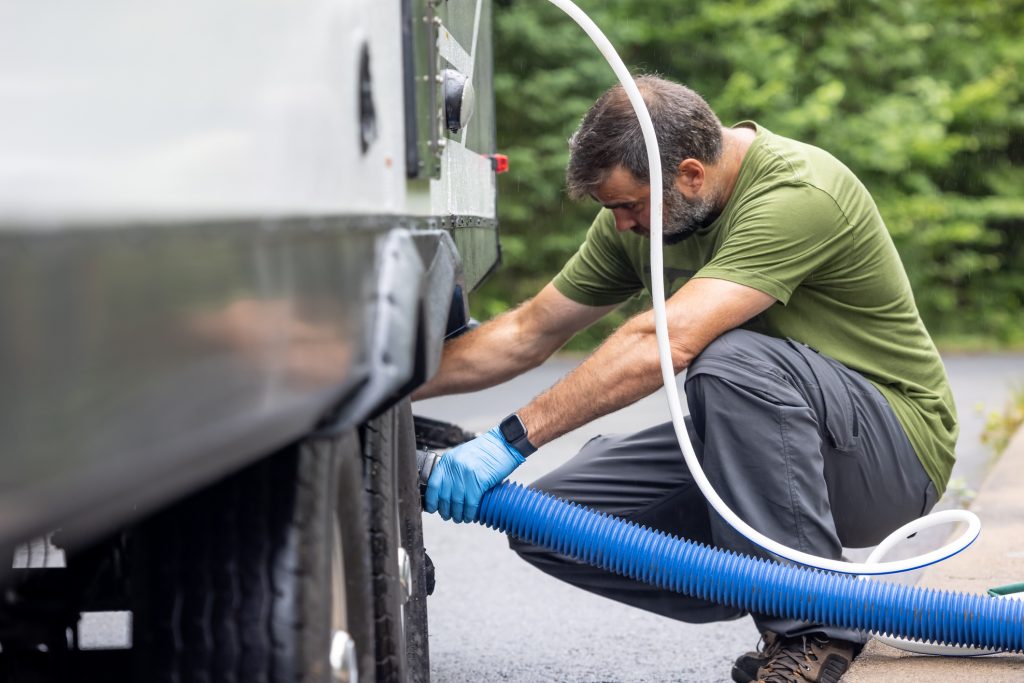One great thing about traveling in your RV is having your toilet, shower, and literally the kitchen sink with you. It's great having water for all of your needs at the ready anytime day or night. But just like anything else that you own, your RV holding tanks need regular care to keep them in good working order.
RVs come with three types of water tanks. The freshwater tank holds clean water for use in showers, for cooking and drinking, or to wash dishes. When water goes down the drain in a sink or shower, it flows into the gray tank. Lastly, the black tank holds wastewater from the toilet. No matter the type of RV water tank, though, you will be managing three main duties: filling the tanks, emptying the tanks, and cleaning/maintaining the tanks.
Guest Post by Full-Time RVer Robin Buck

Taking Care of Your RV Tanks
Know Your Tanks
Just as in a house, water is a daily need when you RV. Learning about your RV water tanks should be a priority for new owners. Your RV dealer should show you where each tank is located in your specific RV, how to access the valves for filling and dumping, and where to read your sensors. You should also know how many gallons each tank will hold. When in doubt, consult your owner's manual for your RV make and model.
Freshwater Tank
In most RVs, the freshwater tank has the greatest capacity. Our motorhome holds 100 gallons! The main time that you will rely solely on your freshwater tank is when traveling or boondocking. We keep our freshwater tank full when driving so that we have water should we need to stop unexpectedly. That way we always have the ability to use sinks, toilets, and showers if needed.
When you are hooked up to water at a campground, you will be using "city water" and bypassing your freshwater tank. Make sure to use a pressure regulator between the water source and your RV to avoid damage from high pressure. If you are going from campground to campground, it is a good idea to use your stored water every week or so and put fresh water in the tank to keep it, well, fresh.
Speaking of keeping the water fresh, make sure to regularly change your water filters. They have an important role in removing odors, bad taste, or contaminants from your water system. It is also advisable to fully drain the freshwater tank and sanitize it twice a year by flushing with a bleach/water mix according to your manufacturer's recommendation.

Gray Tank
The next largest tank is usually the gray tank. As you shower, wash hands, or do the dishes your wastewater will go into this tank. Since the freshwater tank capacity is larger than the gray tank capacity, you can't just use the water until you run out. You have to monitor your sensor levels for when it's time to dump the gray wastewater. We travel with the gray tanks nearly empty so we have room to use our water should we need to stop.
Anytime you use your RV water you will be filling the gray tank, whether you are in a campground or boondocking. How often you need to empty the gray tanks will be determined by how much you use your sinks and showers. It is better for your gray tank if you limit excess soap, food particles, and grease from going down the drains. One way we do this is by wiping off plates and bowls with a paper towel before we put the dishes in the sink to be cleaned.
It is best to leave your gray tank valves closed until the tank is at least half full. This will give you enough pressure to clear the tank and will prevent it from drying out. There are many cleaning products for your holding tanks, but an easy and inexpensive one is Dawn dishwashing liquid. These additives are put in partially filled tanks and often left there while you drive to help slosh it around and get the inside clean.

Black Tank
This is the tank we don't like to talk about, but one that we all need to have. The black tank collects waste from the toilet(s). It is usually the smaller sized tank, so again you need to watch your tank levels for when you need to dump (pun intended!). We also travel with this tank nearly empty so we have room in the tank should we need to use toilets.
Viewpoints abound in the RV community on the topic of toilet paper. There is regular toilet paper, RV toilet paper, 1 ply, 2 ply, as well as many brands to choose from. You have to find what works for you and your RV, but a good rule of thumb is to use as little as possible to avoid clogging tanks and sensors. Some people have a covered trash can in the bathroom for toilet paper waste to cut down on congestion in the tanks.
As with the gray tank, leave the black valves closed until the tank is at least half full. When you dump your tanks, it is helpful to do the black tank first and follow it with the gray wastewater. This way the soapier water helps to wash off the black waste from the hoses. You should also always add 3-5 gallons of water to the black tank after dumping to keep it from drying out. Tank additives are available for cleaning and deodorizing the black tanks as well.

Take Care of Your Tanks
RVing requires a little more thought and planning when it comes to your holding tanks and water usage. However, once you learn how to take care of your tanks it will become second nature. Making sure you properly fill, empty, and maintain your tanks will help your RV systems function better and last longer so you can continue to enjoy your travels.
Robin and her husband, Mike, are Air Force veterans and empty nesters who travel full-time in their Entegra Anthem motorhome. Always ready to explore, they love nature and wildlife, meeting new friends, and discovering America's many hidden gems. Robin chronicles their adventures and experiences on her travel blog RVing with Robin.



